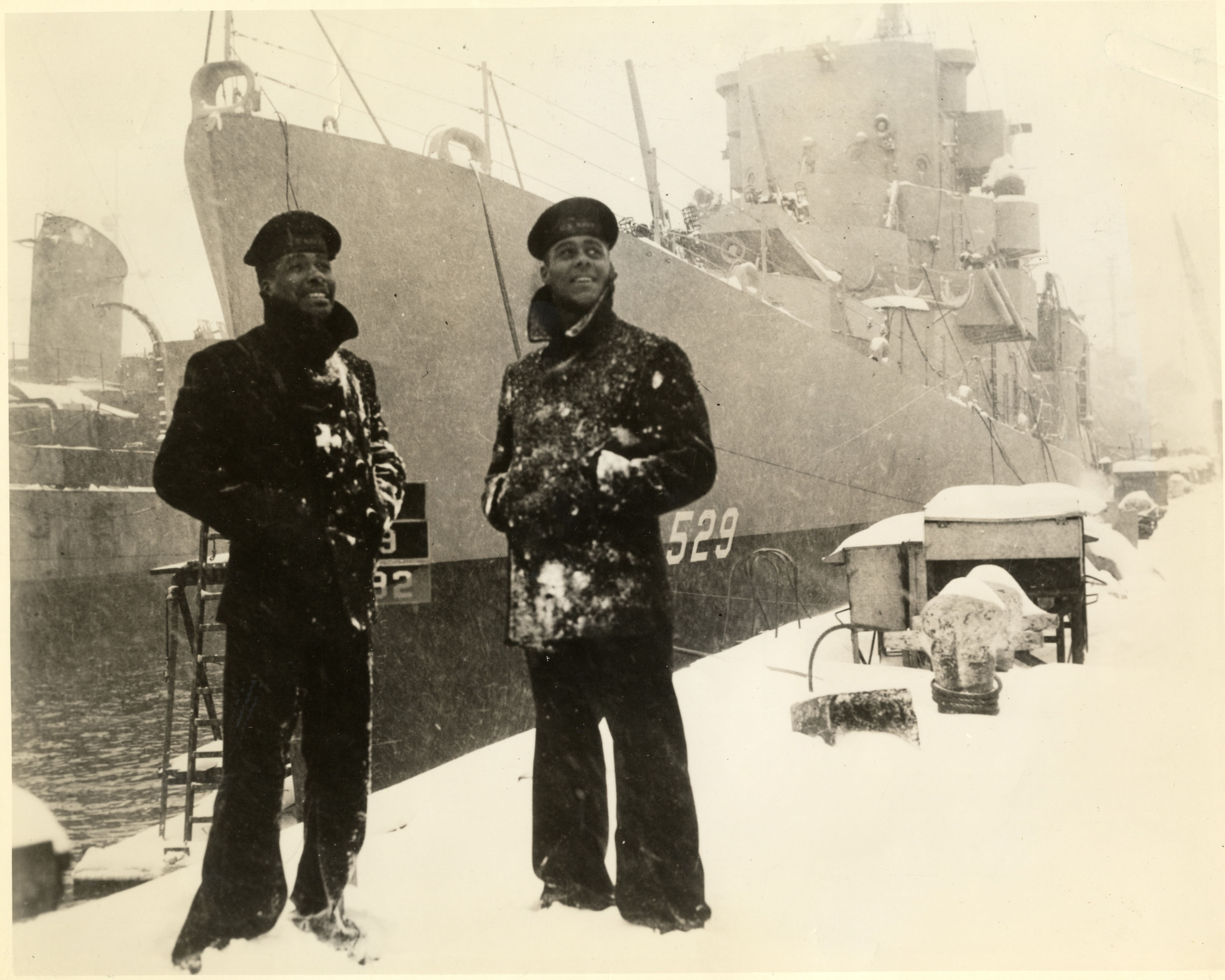Authors:
Historic Era: Era 8: The Great Depression and World War II (1929-1945)
Historic Theme:
Subject:
Summer 2017 | Volume 62, Issue 1


Authors:
Historic Era: Era 8: The Great Depression and World War II (1929-1945)
Historic Theme:
Subject:
Summer 2017 | Volume 62, Issue 1
I sometimes felt like I was swimming against a very strong tide when doing research for my book on the men of the USS Mason. Very few people had ever heard of the first ship in the U.S. Navy manned by African-American sailors.
"A black crew took a warship into combat?" a friend who writes regularly on naval subjects said incredulously. "I don't think so."
"Aren't you confusing this story with that of the Tuskegee airmen or that tank division?" an African-American historian asked. "The Navy was the worst! There was a whole separate steward's branch for black sailors; they were servants or laborers. They only went to sea as cooks."

"No, no," I said. "These men came in after June 1, 1942, when the Navy finally allowed black men to join the seaman's branch and compete for ratings. Most of the African-American crew members were petty officers, radiomen, sonar operators, motor machinists, and yeomen."
"And they went into combat?"
"Yes! They fought in the Battle of the Atlantic on escort vessels, and they were part of the hunter-killer groups that finally beat the U-boats," I said. "They went into Belfast and Plymouth, southern France, and Oran, Algeria. And"—at this point I deepened my voice and made each word distinct—"when the storm of the century stopped Convoy NY-119—a group of tugs, barges, and supply ships sent to build piers in Normandy—the USS Mason was chosen to escort the most vulnerable craft into port.”
“After getting those ships and other crews to safety, the men of the Mason left a safe harbor to head into a storm so bad that the British ships with them turned back. But the Mason returned to rescue the rest of the convoy. The deck split. The men repaired it at sea under appalling conditions. Afterward the commodore of the convoy, Alfred Lind, recommended them for a letter of commendation."
The Navy's affirmation of the skill and bravery of these black sailors would have been deeply gratifying to the African-American community whose leaders had fought so hard to bring the USS Mason into existence. Even after the Navy opened the seaman's branch of the service on a segregated basis in 1942, the fleet remained closed. Franklin Roosevelt himself had drawn the line. "Surely, we can keep these men busy on shore," he wrote to Secretary of the Navy Frank Knox. The Navy claimed it could not both fight a two-ocean war and move ahead of a society where discrimination and segregation were commonplace. But Eleanor Roosevelt, who joined with black leaders to press the President for fair representation in the fleet, would not be deterred.
The result was one warship: the USS Mason, the destroyer escort DE-529, commissioned on a freezing cold day in March 1944 at the Boston Navy Yard. Her white captain, Lt. William Blackford, was at Submarine Chaser School in Miami when he was notified of his new